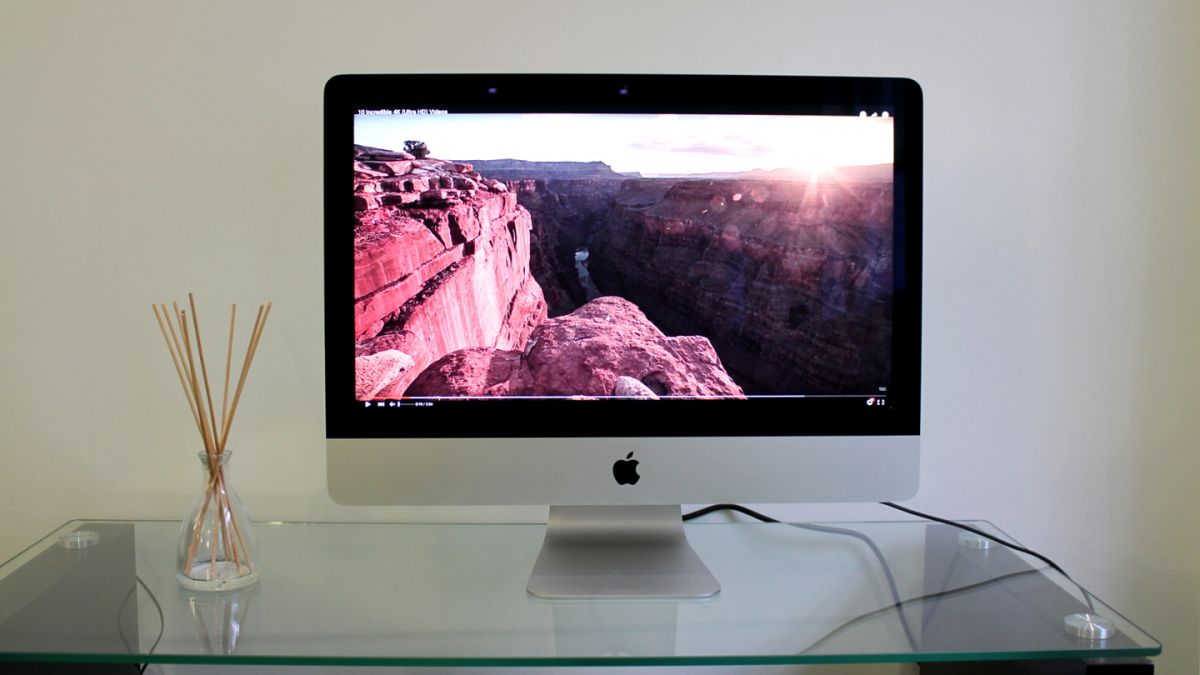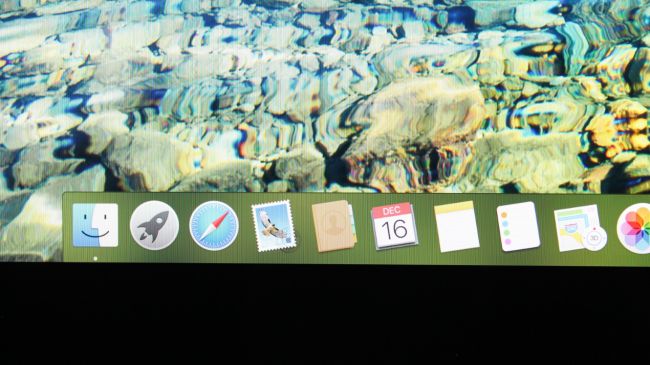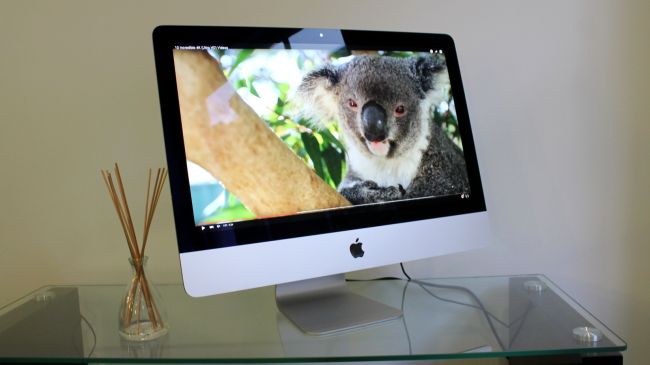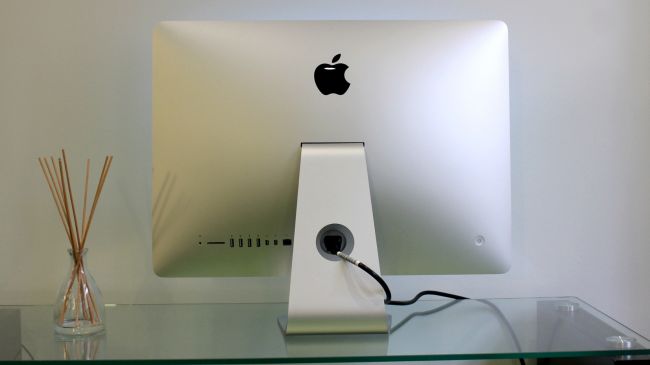Apple iMac with 4K display review: small all-in-one gains a hugely impressive screen
The most compact desktop around just turned beautiful, and more useful too

-
+
Display
-
+
Design
-
+
Build quality
-
-
Fusion Drive not standard
-
-
No height adjustability
-
-
No discrete GPU
Why you can trust T3
Apple's 21.5- and 27-inch iMacs received the computing equivalent of liposuction toward the end of 2012, shedding chunks from their aluminium frames. The next big upgrade arrived toward the end of 2014 when the larger of the two was upgraded to an eye-catching 5K display, a move that eventually led to the 21.5-inch iMac getting a high-resolution facelift of its very own. Its mission? To give your bank balance its very own nip 'n' tuck.
Starting at £1,199, the 21.5-inch iMac with 4K display has arrived not before time. It's one of the few remaining Apple products to get a Retina display, the other being the zombie-like MacBook Air, which somehow manages to drag its invincible aluminium corpse over the finish line each passing year. For a computer whose appeal mainly lies in its attractive, minimalist design, it seems counter-intuitive for Apple's smaller iMac to inflict its ugly display on owners for such a length of time.
Still, it's been worth the wait. The 21.5-ich iMac's 4K display (and it is all about that display) is one of the most impressive we've seen on not just an all-in-one, but any monitor. It's been upgraded with newer processors on the inside and now comes with a genuinely better set of accessories, but if you're thinking of upgrading from your old iMac to the new one, it isn't a question of whether or not you'll make the leap; it's which configuration you'll go for.

Design
On the outside, the 4K iMac is identical to the slimmed down version from 2012. Its compact design has aged so well that the iMac's imitators don't even try to hide it any more - you only have to lay eyes on the Asus Zen AiO Pro for proof of that. Viewed from the front, only the iMac's aluminium base and display are visible thanks to a cable tidy hole in the stand that lets you keep wires out of sight. The iMac stores its guts in the rear of the sloped display, which lends the computer the impression that it's thinner than it actually is when viewed from a side. Effectively a laptop stuffed into a computer, the machine's aluminium chassis can take punishment but is also very light. Shifting it to another room is as easy as picking it up and carrying it under one arm.
Quirks in the design department are few, but noticeable. The lack of a height adjustment arm means that you can't move the iMac's display up or down, although the display does tilt back and forwards a small amount. It means you'll have to settle for a third-party height adjustment stand, which you buy online without breaking the bank, to raise the display to eye level for comfortable reading.

Features
The 4K iMac's most impressive feature is the one you'll be staring at most of the time. Featuring a pixel-resolution of 4,096 x 2,305, the display is simply gorgeous, packing the same 217ppi (or pixels per inch) as the 27-inch 5K iMac. Placing the 4K iMac on an equal footing with the 5K model was a deliberate move by Apple, as it means that you'll be getting an equally sharp display whichever one you choose. Text is on another level of readability compared to the non-Retina iMac, and colours are richer thanks to added support for the DCI P3 colour space, which displays a wider (and more 'true to life' range of colours) on photographs captured with a camera's RAW setting.
There's a decent selection of ports around the back, including four USB 3.0 ports, two Thunderbolt 2 ports, an SXCX card slot, Gigabit Ethernet and Kensington lock slots. For wireless there's 802.11ac Wi-Fi (capable of reaching up to 13Gbps) and Bluetooth 4.0 for connecting peripherals. Apple's own bundled peripherals are impressive. The new Magic Keyboard has a flatter profile with enlarged, sturdier keycaps that are more comfortable to type on compared to those found on the 12-inch MacBook. The iMac's speakers also fare well, producing rich, but not bass-heavy sound that's suitable for watching video content or listening to music.

Performance
The 21.5-inch iMac has never been about raw power, but the 4K version is a more capable machine than the non-Retina version. On the inside it's been upgraded to Intel's fifth-generation Broadwell processor that can reach up to 3.6GHz using Turbo Boost. It comes with 8GB of RAM as standard, which can be upgraded to 16GB for an additional cost. Unless you're a multi-media editing professional who spends a lot of time resizing and editing pictures and video, the standard 8GB is enough to keep things operating smoothly.
On the other hand, the 1TB spinning hard disk drive that comes with the iMac, isn't. If you've been using a laptop or PC with an SSD in the past few years, the iMac's slow boot times, and the amount of time it takes to install applications, is even more noticeable. It's well worth upgrading to the 1TB Fusion Drive, which pairs a 1TB hard drive with 24GB of flash (to speed up boot times), for an extra £80. If you can afford it, upgrading one more step to the 256GB Flash Storage drive would help boot speeds, installing applications, and generally make for a much quicker computer across the board.
If you're into playing the latest games, the 4K iMac isn't a good choice. Its integrated Intel Iris Pro graphics are suitable for light media editing and playing older games (such as Team Fortress 2), but modern titles like The Witcher 3 or Fallout 4 are a no-no. For that, you're better off spending £300 more on the entry-level 27-inch iMac, which has a dedicated AMD graphics card with 2GB of memory and is a much more suitable option for gaming.

Usability
The iMac has always been the easiest Mac to get to grips with: you sit down, give the mouse a wiggle, it resumes from sleep, and away you go. Its convenience is amplified by OS X's ease-of-use, and to borrow Apple's phrase: it just works. OS X 10.11 El Capitan is a delight to use on the iMac's new 4K display, not only visually, but on a practical level too. You can fit more on the display, and unlike with Windows, everything stays in proportion. Menu toolbars, website text, icons and menus all remain readable at high resolutions while looking sharp. And if you pin apps or websites side-by-side, it's possible to cram more on the screen than ever before, which only helps to raise your productivity levels.

T3 Final verdict
If you're looking to upgrade your old iMac, the 21.4-inch 4K newcomer is theobvious choice. Likewise, if you're dipping your toes into Apple's all-in-one computers for the first time,skip the non-Retina version altogether. Just make sure that you upgrade the entry-level 4K iMac's spinning hard disk drive to the 1TB Fusion Drive at the very least (if not the 256GB SSD), or you'll left with a beautifulbut sluggish machine that suffers from slowdown. It's worth bearing in mind that Apple's 5K iMac costs £300 more, which is a good chunk, butworth it if you need a larger display or a dedicated GPU for tearing through the latest games.
Sign up to the T3 newsletter for smarter living straight to your inbox
Get all the latest news, reviews, deals and buying guides on gorgeous tech, home and active products from the T3 experts
-
 Berghaus wants to be your new favourite street-to-summit brand
Berghaus wants to be your new favourite street-to-summit brandThe brand's latest Trail Collection brings the company up to speed with some of the most popular outdoor labels
By Matt Kollat Published
-
 FREITAG's upcycled F260 MIAMI WIDE is a gloriously bold answer to boring tote bags
FREITAG's upcycled F260 MIAMI WIDE is a gloriously bold answer to boring tote bagsThe extra-wide shopper bag is built for beach days, flippers and all
By Matt Kollat Published
-
 A new age of humanity wins the Sony World Photography Awards 2025
A new age of humanity wins the Sony World Photography Awards 2025Zed Nelson's Anthropocene Illusion highlights the influence of humans on the environment and the artificial spaces left for wildlife in a powerful set of images to win this year's SWPA Photographer of the Year
By Mat Gallagher Published